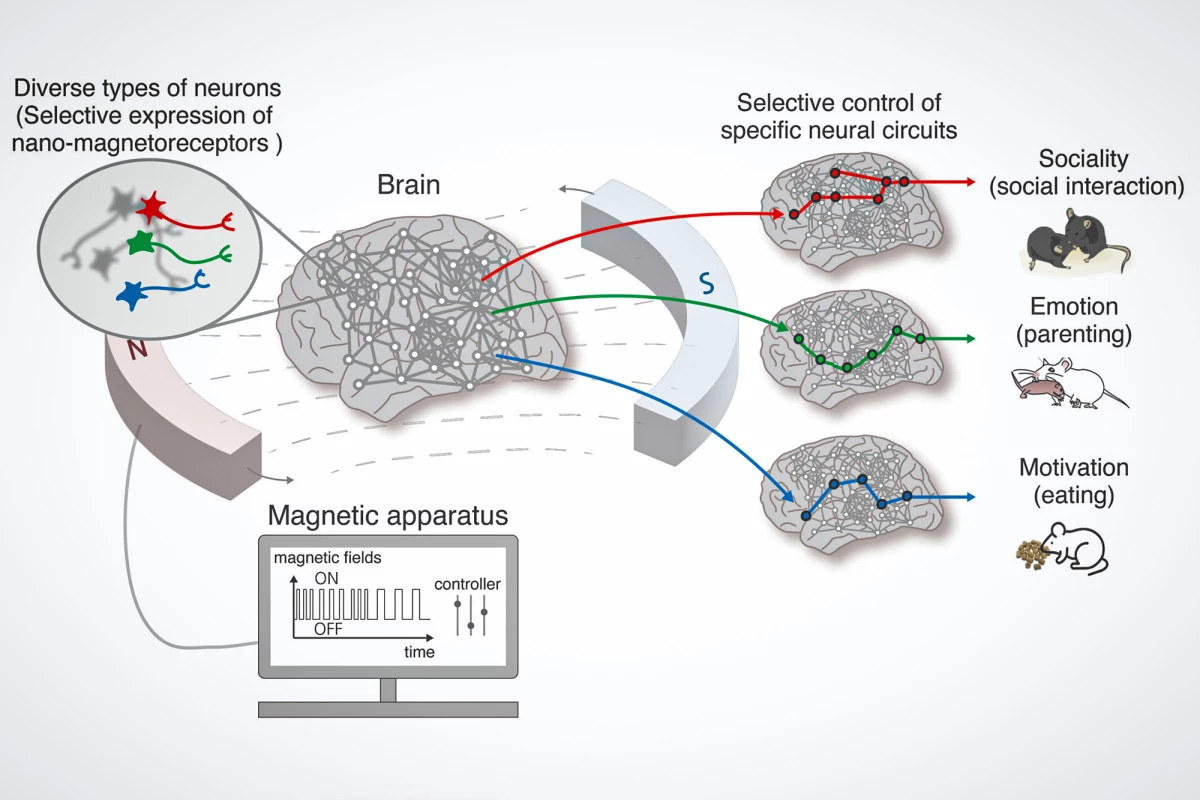Researchers have developed a remote, non-invasive method of selectively controlling neurons in the brain using magnetic fields. The technique opens the door to a greater understanding of brain function and, potentially, new treatments for disorders.
In a recently published study, researchers from the Institute for Basic Science (IBS) and Yonsei University, both in South Korea, tested technology they’d developed that remotely – and precisely – manipulates specific parts of the brain using magnetic fields.
“This is the world’s first technology to freely control specific brain regions using magnetic fields,” said Cheon Jinwoo, from the Center for Nanomedicine at IBS, the Department of Nano Biomedical Engineering at Yonsei University, and the study’s co-corresponding author. “We expect it to be widely used in research to understand brain functions, sophisticated artificial neural networks, two-way BCI [brain-computer interface] technologies, and new treatments for neurological disorders.”
The researchers’ cutting-edge technology is called Nano-MIND (which stands for Magnetogenetic Interface for NeuroDynamics). Whereas optogenetics, which controls neurons with light, and electrical deep brain stimulation, used to treat Parkinson’s disease, both require the implantation of invasive electrodes into the brain, magnetogenetics is a wireless, remotely controlled technique.
The Nano-MIND technology relies on magnetic fields and magnetized nanoparticles. Specific types of neurons are genetically modified to express ‘magnetoreceptors’ that attract injected magnetized nanoparticles to their surface. The neurons are activated when the tiny receptor-attached magnets twist in response to very low-strength, externally applied rotating magnetic fields.

The researchers tested Nano-MIND in freely moving mice to see if they could modulate social behavior and feeding. In one experiment, they selectively activated inhibitory GABA receptors in neurons in the medial preoptic area (mPOA) of the hypothalamus, a region considered to be central to parenting. When the neurons were activated in non-maternal female mice, nurturing behaviors – approaching and retrieving mouse pups – were significantly enhanced, with a more than four-fold increase in care time observed. Control mice showed no interest in the pups.
In another experiment, the researchers targeted circuits in the lateral hypothalamus, a complex brain region involved in regulating many physiological processes, including feeding. Activating inhibitory neurons in this region resulted in a 100% increase in appetite and feeding behaviors; whereas activating excitatory neurons decreased appetite and feeding behaviors by more than 50%.
The researchers say that their experiments showed that the Nano-MIND technology can selectively activate particular neurons and circuits to modulate higher brain functions, paving the way for advancements in neuroscience and the potential for therapeutic applications.
In an article commenting on the study, Felix Leroy, PhD, from the Institute of Neurosciences of Alicante, Spain, said that while the tech “offers advantages such as wireless and long-term stimulation capabilities, which could revolutionize the field by enabling non-invasive and precise manipulation of brain activity, including deep and remote areas,” the study has its limitations. The most pressing one is that the long-term effects of magnetogenetic stimulation exerting repeated mechanical forces on the cell’s surface are unknown and require further study.
The study was published in the journal Nature Nanotechnology.
Source: IBS






